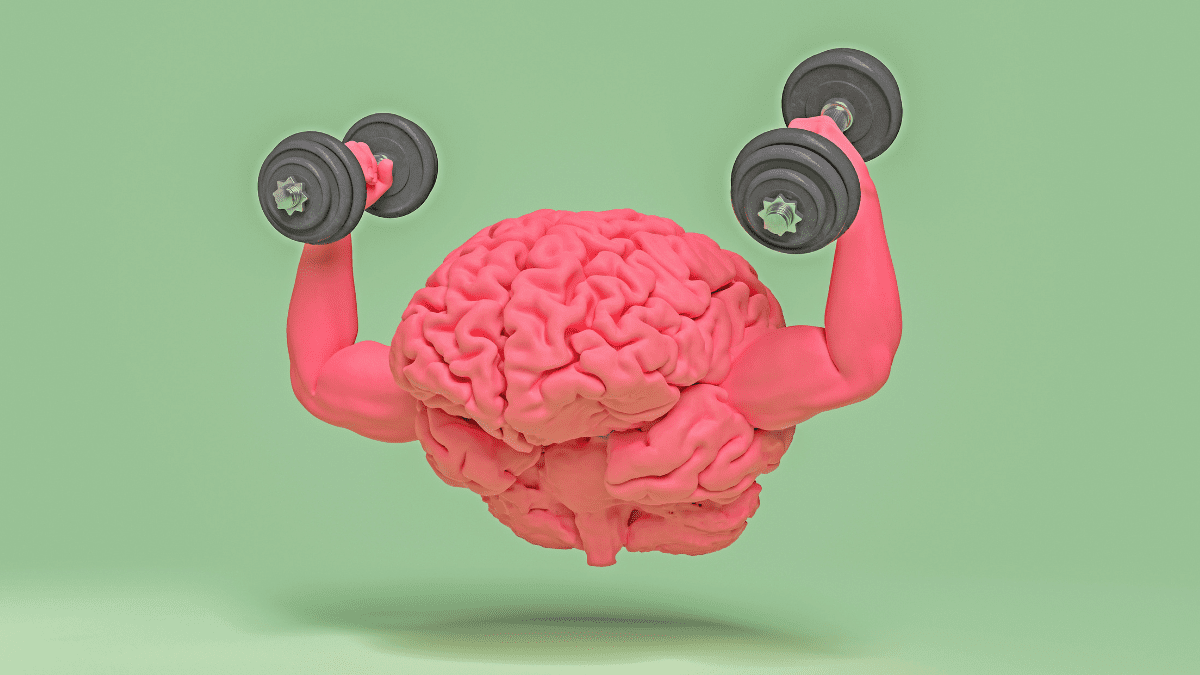Meditation for ADHD: Break Free from the Noise
Meditation for ADHD helps calm racing thoughts and ease emotional overload. Explore how simple, mindful routines bring clarity, balance, and relief to busy minds.

In This Article
- Can Meditation For ADHD Really Break The Noise Within?
- What Is ADHD—And Can Meditation For ADHD Really Help?
- The Science Behind Meditation For ADHD
- Real-World Meditation Techniques For ADHD Minds
- Holistic Approaches: Pairing Meditation With Lifestyle Changes
- From Chaos To Calm — Real Stories Of Meditation For ADHD
- Conclusion — Reclaim Calm With Meditation For ADHD
- Meditation for ADHD — FAQ
Can Meditation For ADHD Really Break The Noise Within?
Life with ADHD often feels like a constant internal storm. Thoughts race. Focus fades. Emotions rise fast and fall hard. In this chaos, even everyday tasks can feel overwhelming. That’s why many are turning to meditation for ADHD — a simple, powerful practice to calm the mind and restore balance.
Meditation isn’t about silencing thoughts. It’s about noticing them without reacting. Over time, it builds space between stimulus and response. It supports emotional regulation, sharpens focus, and brings a sense of calm into the everyday.
More people are exploring meditation not only for mental clarity but also for its deeper, spiritual benefits. You can dive deeper into these ideas in our article on the hidden power of meditation.
So what’s actually happening in the ADHD brain? And how can meditation help manage that internal noise? Let’s look deeper into the science and the practice.
What Is ADHD—And Can Meditation For ADHD Really Help?
ADHD is more than just distraction. It affects how the brain manages focus, impulse control, and emotions. For many, daily life feels overwhelming. But there’s hope. Meditation for ADHD offers a grounded way to quiet the inner noise and improve emotional balance.
What Happens Inside The ADHD Brain?
The ADHD brain is wired differently. It struggles to filter out distractions. It often reacts before thinking. Brain imaging studies show that people with ADHD have less activity in the prefrontal cortex—the part that controls focus and decision-making.
To make things more complex, dopamine levels in the ADHD brain are often lower. This impacts motivation and mood. It’s why tasks that seem simple for others can feel impossible. The brain is always chasing stimulation.
The best way to support the ADHD brain is to create space for awareness. This is where meditation begins to shine.
Why Is Meditation For ADHD So Effective?
Meditation helps create mental stillness. Even when the mind races, mindfulness builds the skill to observe without reacting. That shift alone makes a huge difference.
Here’s how meditation for ADHD works on a deeper level:
- Builds self-awareness: You notice distractions instead of following them.
- Slows reactivity: Pausing before reacting becomes easier.
- Regulates emotions: You respond with more control, even under stress.
- Improves attention span: With practice, focus lasts longer.
Research from Mindful.org shows that meditation rewires the brain. It increases gray matter in regions responsible for emotional regulation and self-control. Over time, these changes make it easier to manage ADHD symptoms without feeling overwhelmed.
Can Meditation Replace Medication For ADHD?
Not always—but it can work alongside it. Meditation won’t “cure” ADHD. However, it helps people manage their symptoms in a more empowered way. Many therapists recommend it as part of a larger support plan.
For those looking to reduce dependence on medication, meditation offers:
- A natural way to improve emotional stability
- A sense of control over daily overwhelm
- Support for better sleep, focus, and mood
Mini Checklist: Is Meditation Right For Your ADHD?
- Racing thoughts leave you feeling overwhelmed more often than not.
- Finding natural ways to quiet your mind has become a growing priority.
- Impulse control remains a daily challenge that disrupts your flow.
- You’re open to holistic tools
If you said yes to at least two, meditation may be worth exploring.
What’s The First Step To Start Meditation For ADHD?
The first step is small. Just a few minutes of stillness can shift your day. Start by focusing on your breath. Let thoughts come and go. The goal isn’t silence—it’s presence.
Next, we’ll explore the science behind meditation for ADHD—and how it supports attention, memory, and emotional calm.
The Science Behind Meditation For ADHD
How Does Meditation Rewire The ADHD Brain?
For people with ADHD, the brain often struggles to slow down. Distractions appear quickly. Emotional responses feel intense. But meditation changes how the brain responds over time. It doesn’t just reduce stress—it creates new patterns.
Neuroscience shows that consistent meditation strengthens the prefrontal cortex, the region responsible for decision-making and focus. It also reduces activity in the default mode network, the part of the brain that fuels mind-wandering. This shift helps quiet the noise and improve attention.
The best way to calm the ADHD brain is to train it to pause. Meditation gives it this practice daily.
Mindfulness-based practices have been shown to significantly improve attention and emotional regulation in individuals with ADHD.
Why Is Meditation A Game-Changer For Focus And Memory?
People with ADHD often find it hard to stay focused or remember details. Meditation improves working memory by helping the mind stay anchored in the present.
One study found that mindfulness training improved attention regulation and working memory performance in just a few weeks. These changes weren’t short-lived—they continued with regular practice.
Here’s how meditation for ADHD boosts cognitive strength:
- Improves sustained attention over longer periods
- Reduces mental fatigue from constant switching
- Builds clarity through better memory and present-moment awareness
What About Emotional Control—Can Meditation Really Help?
Yes, and it’s one of its most powerful benefits. Emotional regulation is often hard for people with ADHD. They feel things deeply and react quickly. But meditation helps build the space between emotion and action.
It trains the nervous system to respond, not just react. Breathing exercises, body scans, and guided mindfulness all support emotional steadiness. These practices reduce stress hormones and increase emotional awareness.
How Much Meditation Is Enough To See Results?
The good news is, you don’t need hours of silence. Studies show that just 10–15 minutes a day can start making a difference. The key is consistency, not perfection.
To improve outcomes, start with short, guided sessions. Use a timer, sit comfortably, and breathe with awareness. Apps like Headspace or Insight Timer are great tools for ADHD minds.

Real-World Meditation Techniques For ADHD Minds
Which Mindfulness Practices Actually Work For ADHD?
Sitting in silence can be frustrating for ADHD minds. The good news is, meditation doesn’t have to be still or silent. There are many ways to practice mindfulness that are flexible, gentle, and effective.
Research shows that specific meditation techniques for ADHD, including short guided practices, can lead to meaningful improvements in attention and impulse control.
Here are ADHD-friendly techniques that help calm the mind without forcing it to stop:
- Walking meditation – Movement keeps the body engaged while the mind stays present.
- Guided meditations – Listening to a voice helps anchor your attention.
- Breath-focused mindfulness – Counting or noticing each breath brings calm in seconds.
- Body scans – Bringing awareness to each part of the body grounds racing thoughts.
To improve your experience, try practicing at the same time each day. Use a comfortable space, dim lighting, and soft sounds to reduce sensory overload.
What If I Can’t Sit Still Or Focus?
That’s completely normal—especially with ADHD. The goal isn’t to empty your mind. It’s to observe without judgment.
If you find yourself restless, try these supportive strategies:
- Start with 2 minutes, not 20
- Use a fidget or grounding object while meditating
- Let your eyes stay open and focus on a spot
- Try chanting or humming to stay anchored
The best way to stay engaged is to choose a method that meets your energy level. Meditation is a tool, not a test. You can’t fail—showing up is the win.
How Can I Build A Habit That Actually Sticks?
Building any habit with ADHD can be tricky, but not impossible. The key is to keep it small, specific, and rewarding.
Mini Habit Checklist:
- Choose a trigger (right after brushing teeth, or morning coffee)
- Set a goal so small it feels silly (like 1-minute breathing)
- Use visual reminders (a note on your mirror or phone)
- Reward yourself with a positive phrase or stretch
Over time, small steps grow into powerful change. Meditation becomes not just something you do—but a way you return to yourself.
Why Is Consistency More Important Than Duration?
A long session once a week won’t rewire the brain. But short, daily practice will. Research shows that even brief meditation, when done consistently, creates long-term changes in the brain’s attention and regulation centers.
To improve ADHD symptoms naturally, build a steady rhythm with your practice. It’s not about doing it “right”—it’s about doing it regularly.
Holistic Approaches: Pairing Meditation With Lifestyle Changes
How Do Diet And Exercise Affect Meditation For ADHD?
Meditation is powerful on its own. But when you pair it with healthy lifestyle choices, the results multiply. For people with ADHD, this can be a game-changer.
Certain foods can support brain function and focus. Others can increase restlessness and impulsivity. The same goes for physical activity. Movement improves mood, attention, and emotional regulation—especially in ADHD brains.
To improve focus and energy naturally, try combining meditation with:
- Omega-3-rich foods: Salmon, chia seeds, walnuts
- Protein-based breakfasts: Eggs, yogurt, nut butters
- Daily movement: Walking, dancing, yoga, or swimming
- Hydration: Water boosts energy and reduces fatigue
When the body feels good, the mind becomes easier to calm. That’s why food and movement work so well with mindfulness.
Can Better Sleep Make Meditation More Effective?
Absolutely. Sleep is essential for emotional balance and focus. But many with ADHD struggle to fall or stay asleep. Meditation supports better sleep by calming the nervous system.
To improve sleep quality alongside meditation:
- Avoid screens 1 hour before bed
- Use sleep meditations or body scans
- Keep a consistent bedtime
- Lower lights to signal wind-down
Studies show that mindfulness improves sleep by reducing cortisol and mental chatter. A calm body makes it easier to enter and stay in deep sleep.
What Other Holistic Tools Can Support Meditation For ADHD?
A holistic approach means working with the whole self—body, mind, and spirit. Meditation becomes more impactful when paired with other simple practices:
- Yoga: Combines movement with breath and focus
- Nature walks: Grounding and soothing for sensory overload
- Journaling: Helps release thoughts before they spiral
- Mindful breathing breaks: Pause throughout the day for 30 seconds
You don’t need a strict routine. Just choose one or two supportive habits that feel good. Let them anchor your day with presence.

From Chaos To Calm — Real Stories Of Meditation For ADHD
What Are Real People Saying About Meditation For ADHD?
Sometimes the most powerful proof is lived experience. While science gives us data, real people give us hope. Many with ADHD have discovered that daily meditation helps them feel more focused, balanced, and in control of their emotions.
Here are some common stories from ADHD support groups and wellness communities:
- “I couldn’t sit still at first. But guided meditations gave me something to hold onto.”
- “Meditation became my five-minute reset between meetings. It saved me from burnout.”
- “I used to snap at small things. Now, I pause before reacting—and it feels like magic.”
To improve emotional clarity, many people start with just a few deep breaths a day. Over time, those moments add up to something much bigger.
Can Kids And Teens With ADHD Benefit From Meditation Too?
Yes—and early practice can be life-changing. Children and teens with ADHD often feel misunderstood. Meditation gives them tools to understand themselves better and express emotions safely.
Simple, age-appropriate practices include:
- Mindful coloring or drawing
- Listening to calming music with focused attention
- Following short, playful guided meditations
- Practicing belly breathing or blowing bubbles slowly
Schools are now introducing mindfulness to students with ADHD to help reduce behavioral issues and support learning. The earlier they learn these tools, the more confident and self-regulated they become.
How Long Before Meditation Starts To Make A Difference?
That depends—but progress often starts faster than people expect. Some report better focus after just a week. For others, emotional changes come after a few consistent months.
Here’s a typical timeline for ADHD meditation progress:
- Week 1–2: Feeling calmer after short sessions
- Week 3–4: Noticing improved focus or fewer emotional outbursts
- Month 2–3: Stronger habits, deeper emotional awareness
- Month 4+: Increased mental clarity and resilience
The best way to see results is to stay consistent. Even on hard days, showing up matters more than doing it perfectly.
Conclusion — Reclaim Calm With Meditation For ADHD
Living with ADHD can feel like constant noise. Your mind moves fast. Emotions come quickly. Focus slips just when you need it most. But it doesn’t have to stay that way.
Throughout this guide, we’ve explored how meditation for ADHD offers a natural, steady path toward balance. We looked at the science behind it. We uncovered real-life stories of change. And we explored techniques that truly work for ADHD minds.
You don’t need long sessions to see a difference. Perfection isn’t the goal. What matters most is simply taking the first step.
Start small:
- Try just 2 minutes of deep breathing each morning
- Pick a guided meditation you enjoy
- Anchor your practice to a daily routine—like brushing your teeth
- Let consistency, not pressure, lead your progress
Pair your meditation with gentle lifestyle changes. Eat foods that nourish your mind. Move your body with kindness. Get the rest your brain needs. Over time, these small steps become your foundation.
For more support, you can explore our guide on how to build a mindful morning routine. A peaceful day often starts with a peaceful beginning.
ADHD doesn’t mean you’re broken. It means your mind needs rhythm. Meditation can give you that rhythm—one breath, one pause, one moment at a time.
The stillness you seek isn’t far away. It’s already within you—waiting to be noticed.
You’re doing better than you think. Keep going.
Meditation for ADHD — FAQ
How Does Meditation Benefit Individuals with ADHD?
Meditation offers several benefits for individuals with ADHD:
- Enhances Focus: Regular meditation can improve attention span and concentration.
- Reduces Impulsivity: Mindfulness practices help in developing better impulse control.
- Manages Stress: Meditation techniques are effective in lowering stress and anxiety levels.
Research indicates that mindfulness meditation can significantly alleviate ADHD symptoms by promoting better self-regulation and cognitive function.
What Meditation Techniques Are Most Effective for ADHD?
Individuals with ADHD may find the following meditation techniques particularly helpful:
- Mindful Breathing: Focusing on the breath to anchor attention.
- Body Scan Meditation: Progressively observing sensations throughout the body to enhance awareness.
- Walking Meditation: Combining movement with mindfulness to maintain engagement.
These methods can be tailored to suit personal preferences and can be practiced in various setting
Can Children with ADHD Benefit from Meditation?
Yes, children with ADHD can experience positive outcomes from meditation practices. Engaging in age-appropriate mindfulness activities can lead to:
- Improved Attention: Better focus in academic and daily tasks.
- Emotional Regulation: Enhanced ability to manage emotions and reactions.
- Reduced Anxiety: Lower levels of stress and anxious feelings.
Created by Lili Vu, holistic health & nutrition coach in training. Deeply passionate about mind-body healing, nourishment, and intentional living — practices I’ve lived, tested, and continue to grow through. Embracing my ADHD and supporting my partner through a life-altering stroke reshaped how I understand the nervous system, resilience, and healing. I explore holistic well-being practices including yoga, plant-based nutrition, gut and hormone health, trauma recovery, and mindful habit change — all rooted in my personal healing journey. 🌿







